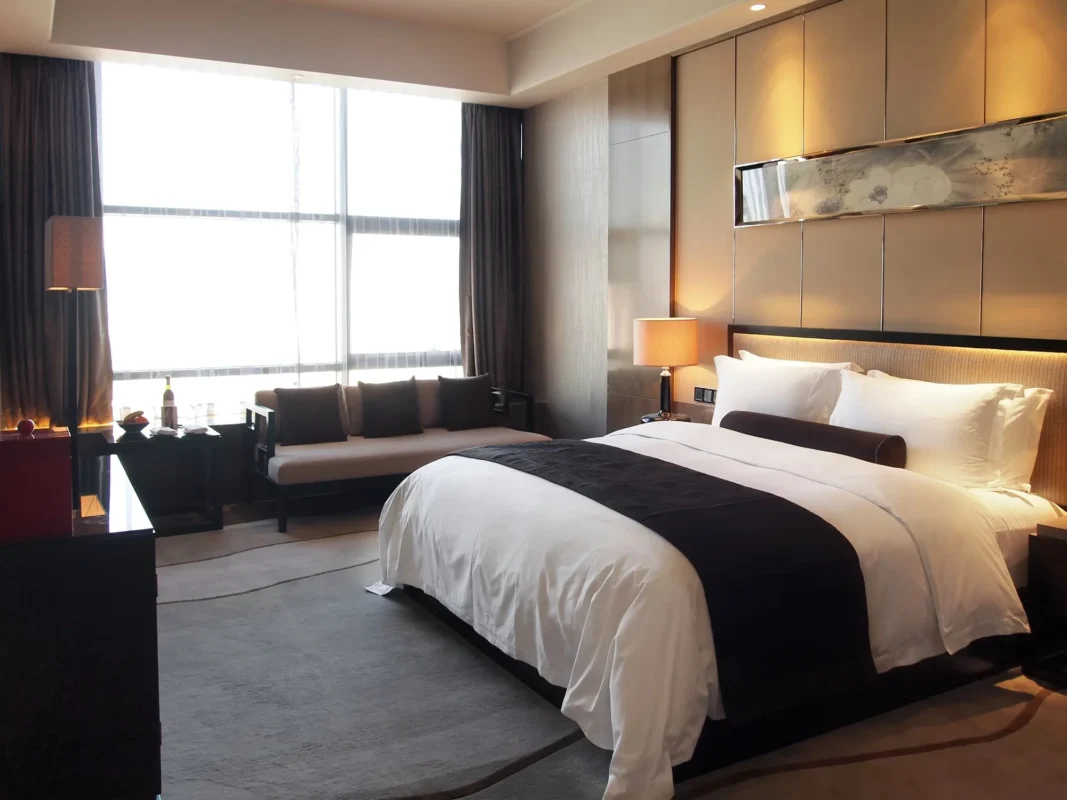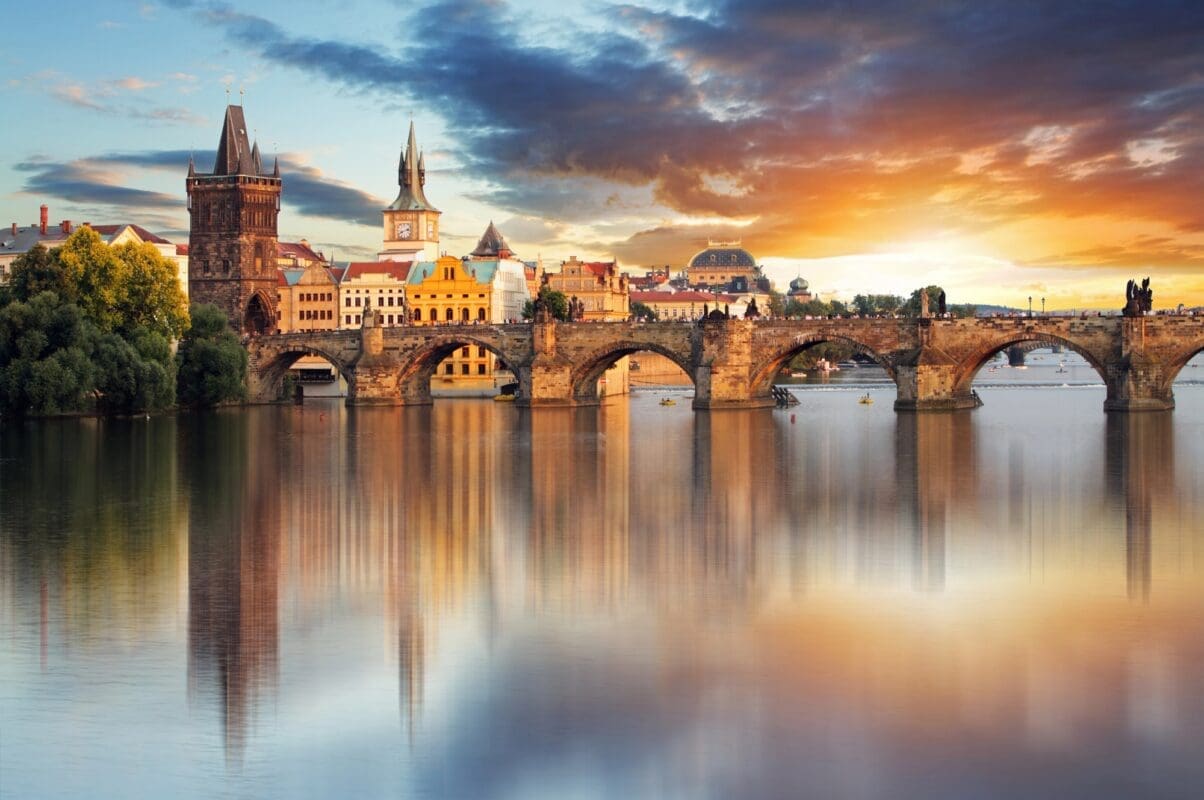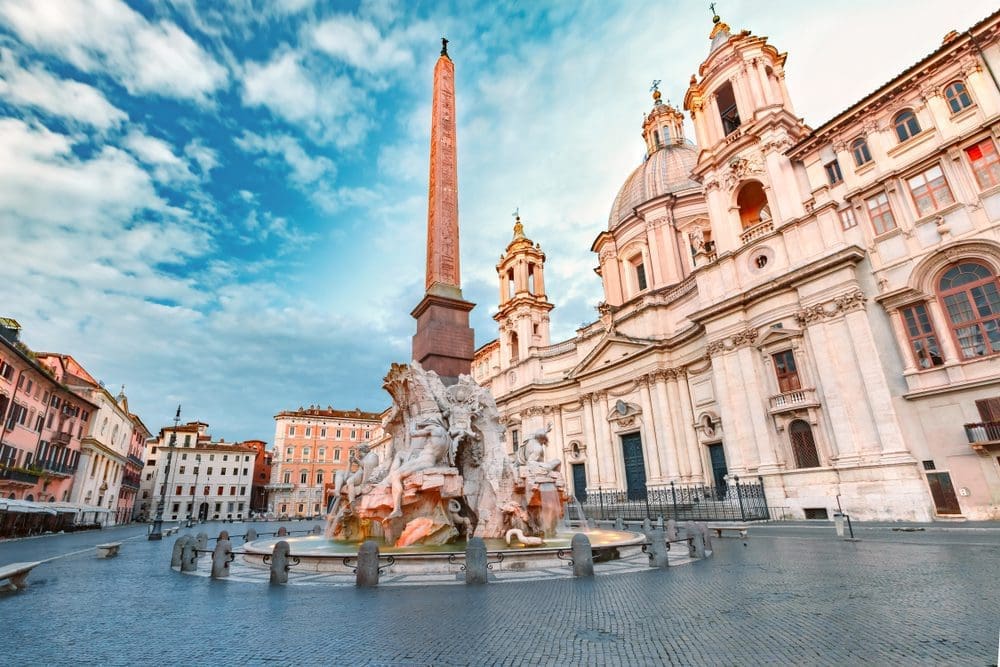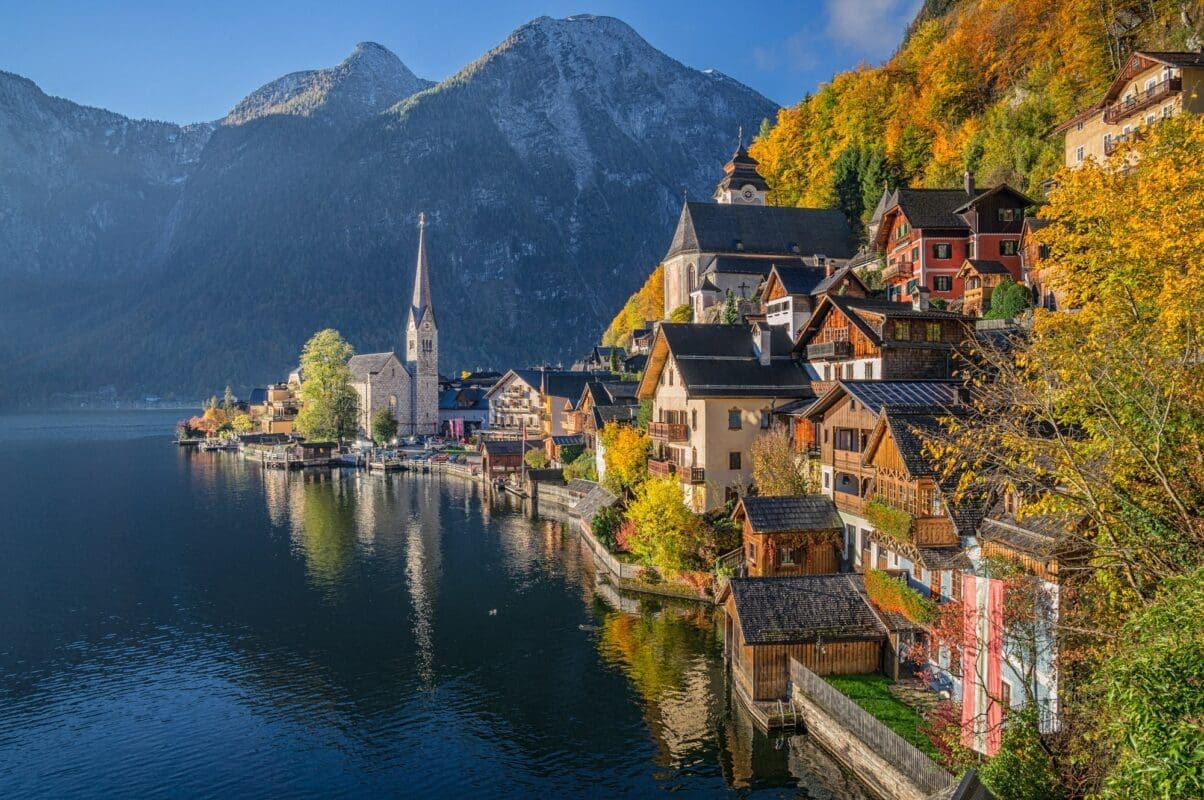A trip to Europe promises cultural experiences and historic landmarks, and often times your hotel can be a unique cultural and historical encounter in itself. On the other hand, North American travelers are sometimes surprised and even disappointed by the distinct differences in hotel accommodations in Europe in comparison to home.
Understanding and being prepared for these differences can help ensure that you are comfortable and satisfied with your hotel stays throughout your journey. Below you’ll find some of the key features of European hotels and their differences from North American hotels.
1. Room Sizes and Layouts
European Hotel Rooms: European hotel rooms are typically more compact compared to those in North America. This is largely due to how densely populated most European cities are, meaning space is at a premium. Additionally, many European hotels are housed in historical buildings with unique architectural features and non-standard floor plans. This means that rooms can vary significantly in shape and size from one hotel to another, and even within the same hotel! You can typically expect:
- Efficient Use of Space: Clever storage solutions, multifunctional furniture, and space-saving designs ensure that even petite rooms feel comfortable and livable.
- Non-Standard Layouts:
-
- Advantages: Staying in a non-standard room can be a more authentic and interesting experience. Each room may offer unique charm and character that reflects the building’s history.
- Disadvantages: The lack of standardization can also mean that some rooms might not meet all your expectations in terms of layout or amenities. You may need to be a bit more flexible than usual.
- Variety of Furnishings: There’s often a wide array of designs and furnishings with the same building, often reflecting the local culture and architecture as well as the non-standard layouts.
Quick Tip: Embrace the coziness and unique character of European accommodations. If spaciousness is a priority, consider booking suites or hotels that offer larger rooms, though they may come at a higher price. Be prepared for non-standard layouts by reviewing room photos and descriptions carefully before booking.
How We Can Help: If you need a larger room, we can help you identify room categories that offer more spacious accommodations. If you’ve already booked with us, we can contact your hotel and ask that they put you in one of their larger standard rooms, or discuss other upgrade options.
2. Beds: Twin vs. Double and Other Considerations
Understanding bed terminology is crucial to ensure a restful night’s sleep during your European trip, and to avoid having to share a bed with your room mate (or to ensure you don’t have to sleep separately).
European Bed Terminology:
- Twin Room: Typically means there are two single, separated beds. This arrangement is ideal for friends or family members traveling together who prefer individual sleeping spaces.
- Double Room: Usually indicates one bed designed to sleep two people. This is similar to a full-size bed in North America but is usually smaller than a queen or king size.
Double/Twin Rooms
In many European hotels, the Double Rooms and the Twin Rooms are one and the same. The hotel just configures the room as either a Twin or Double by combining or separating the beds based on your preference. In a good hotel, the beds should be sturdy, and will be covered by a pad when pushed together, meaning you may not even realize that your bed is actually two beds pushed together. They can sometimes share a top sheet and blanket, while in some hotels you’ll find two separate sets of single bedding in the pushed-together bed.

Want to build your own trip to Europe instead?
Instantly create your own customized trip with our easy to use trip builder
Duvets versus Sheets and Blankets:
You may be surprised that most European hotels do not use the combination of flat sheets, fitted sheets, and separate blankets that is normal in most North American beds. Most European hotels instead use duvets as the primary bedding. A duvet is a soft flat bag filled with down, feathers, or synthetic fibers. Duvets are typically encased in a removable cover, making them easy to clean and maintain. Indeed, many Europeans consider blankets unsanitary, because they cannot be washed as often and easily as a duvet cover.
Tip: When booking, clearly specify your bed preferences and confirm the bed sizes with the hotel to avoid any surprises upon arrival. Don’t hesitate to request a specific arrangement if needed.
How We Can Help: If you don’t think you can sleep comfortably in a standard twin or double bed, let us know in advance so we can either arrange for an upgrade or select a different hotel that offers Queen or King-sized beds. If you are taller than 6’3”, please tell us so we can check with the hotel whether the standard beds will fit you.
3. Bathrooms
European bathrooms are often smaller, and it is not standard to have both a shower and bath tub in every bathroom, therefore if you have a preference it is good to check at the time of booking.
- Showers: Typically showers are much smaller, and often lack a basin or complete shower wall. You may need to be a little more careful if you want to avoid a minor flood.
- Bathroom Fixtures: European hotel bathrooms also come with a diverse range of different fixtures compared to North American bathrooms. It may take some tinkering to figure them out initially. It typically isn’t too hard, but just be prepared for the challenge.
- Towels: Unless otherwise stated, most 3-Star hotels and above provide towels. However the major difference compared to North America is the size of the towels. In Europe, hotel towels often are very small compared to the large sheet towels you find back at home. Therefore we suggest requesting additional towels if needed.
- Bidets: That strange flat-looking toilet with a nozzle is called a bidet. Its purpose is not as a secondary toilet but as a “wash basin for your private parts”. Hotels would not appreciate it if it was used as a secondary toilet. We also don’t recommend using it to do your laundry!
- Hair Dryers: Most 3-Star and above hotels have hair dryers in their hotel rooms. While some have them installed in the bathroom, others have them stored away in the wardrobe or bedside drawer if you need them, so you do not have to bring your own. If you’re unsure if your hotel provides them, check before booking.
4. Elevators
You may be shocked to find out that not all European hotels have elevators, unlike in North America. Again, many of the hotel buildings are very old and some city regulations do not allow for buildings to be modified to be able to add an elevator.
So if an elevator is a critical requirement for you, be sure to check whether a hotel has one before booking. Otherwise use the opportunity to work off those extra calories from all the delicious foods you’ll be trying! And remember, if you need help with your luggage, reception staff can organize it to be brought to your room for you.
If the hotel does happen to have an elevator (most modern hotels do), you’ll often find that they are small elevators with a capacity of only 2 or 3 people. If you have tons of luggage, you may need to make multiple trips. You may also find that even in hotels with elevators, you may still be required to walk up a few steps at the entrance or another random point in the building.
5. Amenities and Services
While European hotels may offer fewer in-room amenities compared to North American counterparts, they often excel in providing high-quality essentials and unique services. However, the level of amenities can vary significantly based on the hotel’s star rating.
- 3-Star Hotels
-
-
- Basic Amenities: May sometimes miss basic in-room amenities expected in North America, such as in-room coffee makers or mini-fridges, although typically they will have an electric kettle for tea and instant coffee
- Essentials: Provide comfortable bedding and essential toiletries but might lack some conveniences found in higher-rated hotels.
-
- 4-Star Hotels
-
-
- Reduced Common Facilities: Typically do not have as many common facilities as 4-star hotels in North America, such as extensive fitness centers or multiple dining options.
- High-Quality In-Room Amenities: Often make up for the lack of common facilities with high-quality in-room amenities and toiletries.
- Historic Charm: Especially in boutique hotels, 4-star establishments offer historic charm and personalized services that enhance the guest experience.
-
- 5-Star Hotel
-
- Comprehensive Facilities: Provide the common facilities expected in 5-star hotels globally, including extensive fitness centers, multiple restaurants, pools, and spas.
- Old-World Palatial Surroundings: Often housed in grand, historic buildings, offering an old-world palatial ambiance that adds to the luxury experience.
-
Tip: Assess your needs regarding in-room amenities. If specific features like a mini-fridge or kitchen are essential, verify their availability when booking. Consider the star rating to ensure the level of amenities meets your expectations.
How We Can Help: We can provide advice on the intangibles of the hotels, such as the location and old-world charm, that will help you to make the best overall choice.
6. Parking Availability
If you are imagining pulling up to the hotel front entrance with your rental car and dropping off your bags, and then picking out a nearby spot in the hotel parking lot, then you will likely be very unpleasantly surprised. Parking is typically a significant challenge in any hotel located in a European city center, often even in 5-star hotels. Expect:
- Limited Availability: Many hotels within European cities do not offer parking facilities, and those that do may have very limited spaces and must be booked in advance.
- High Demand and High Cost: In densely populated urban areas, parking spaces are scarce and often come at a premium cost.
- Difficulty in Arriving by Car: Hotels are often located in pedestrian areas, or on streets that don’t allow you to stop and unload, meaning it is sometimes impossible to arrive by car, much less park at the hotel.
Tip: Due to the lack of parking and heavy traffic throughout the city, it will probably be more convenient to use public transportation, walk, or utilize taxis and rideshares. Taxis and rideshares are not only familiar with the city, they also often have permission to drive to places you won’t be able to reach. When booking your hotel, consider its proximity to public transportation hubs like metro stations.
Unless you plan on spending most of your trip exploring the countryside, consider ditching the rental car altogether and traveling by train instead. It’s not only cheaper, but also less stressful and more comfortable. If traveling by car is essential for your trip, look for accommodations on the outskirts of the city where parking is more readily available, and plan to use public transit to reach the city center.
How We Can Help: We’ll book your train tickets, and provide detailed information on how to travel between cities by train, as well as directions for getting around cities by public transportation.

Want to build your own trip to Europe instead?
Instantly create your own customized trip with our easy to use trip builder
7. Check-in and Check-out Procedures
Check-in and check-out times can be more rigid compared to North American hotels. Check-in is typically in the early to mid-afternoon (around 2 PM), and check-out is usually by 11 AM. Smaller hotels often do not have 24-hour reception. If arriving late at night, it’s good to let your hotel know in advance.
8. Additional Considerations for North American Travelers
- Language: In most hotels located in major tourist centers, language will not be an issue as staff typically speak English fluently. In guesthouses and small boutique hotels outside of major cities, language barriers can arise, but typically you’ll still be able to figure things out using English.
- Electrical Outlets: Europe uses different electrical standards (typically Type C or E/F plugs and 230V). Ensure you have the necessary adapters for your electronic devices. While most phones and laptops can handle Europe’s 230 voltage, some devices like electric shavers cannot. Be sure to check whether your devices can handle the voltage before bringing them.
- Lighting in Common Areas: In many smaller hotels, light in the hallways and other common areas will be motion activated, or will require you to turn on the switch. Europeans typically consider leaving hallway lights on continuously as wasteful.
- Cultural Differences:
-
- Speaking Volume: In breakfast rooms and lobbies you may find that you get some unpleasant looks from European guests. In that case you probably just need to lower your voice. North Americans typically converse much more loudly than Europeans in public spaces, which Europeans perceive as rude.
- Tipping: Tipping is much more uncommon in hotels than in North America. While hotel staff will certainly appreciate tipping, they may be quite surprised and even a little confused.
What to expect from Hotels in Europe
Understanding the nuances of European hotels can ease your travel experience. From navigating room sizes and bed types to managing amenities and parking availability, being informed allows you to choose accommodations that best fit your needs, and helps you avoid unpleasant surprises.
At the end of the day, there will still probably be some aspects of European hotels that you will find lacking in comparison to North American hotels. On the other hand, you will probably also find many pleasant surprises as well. Try to embrace the unique charm of European hotels, and think of it as all part of your cultural experience.
Trip Ideas & Itinerary Plans




